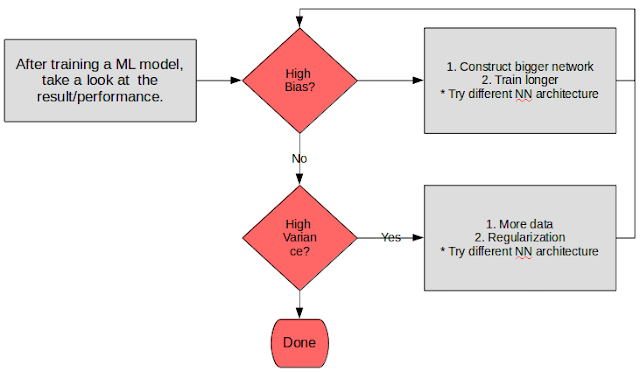A Basic Recipe for Machine Learning

Ever since wrapping up the three Deep Learning courses by Andrew Ng I've been meaning to write down some of the gems that he's highlighted throughout the course. One of the nice ones that I felt needed to be written down is his general recipe to approaching a deep learning algorithm/model. I've basically summarized it in a flowchart below (because everybody loves a flowchart right?) Basic deep learning recipe What is bias and variance? The below diagram is the typical explanation that I'm sure most of us are used to. Graphical illustration of bias and variance How can we know if we have high bias or high variance? For high bias, we could take a look at the training set performance. A poor performance is an indicator of a poor model fit, and signals that we could try to apply a bigger network to get a better fit of the model. For high variance, we could take a look at the validation set (or dev set - as Andrew calls it) performance. ...

